AudioCulture
The noisy library of New Zealand music
Te pātaka korihi o ngā puoro o Aotearoa
Jay Monds
aka Jay Bulletproof, DJ Pots
In the early 2000s, he took the sound of New Zealand drum and bass to the world as one-half of Bulletproof, the production duo he shared with his friend Josh Lees, before turning his skills towards dubstep, piloting camera drones, commercial broadcasting through Auckland’s George FM and finally podcasting with his much-loved interview series, The History of New Zealand Drum & Bass. A loveable rogue with a passion for new, futuristic music, Jay lived hard and opened doors for the generations that followed him.
Although he’s best known for his involvement with drum and bass in New Zealand, Jay Monds started his musical life in the early 90s Christchurch rock scene. After playing in a couple of bands as a teenager, he moved out of home and started working part-time at vintage clothing store Hunters & Collectors. While, as he put it, “Selling Doc Martens boots and leather jackets to bikers, skinheads and punks,” he befriended several local alternative rock bands – Pumpkinhead, Loves Ugly Children, and 147 Swordfish – who let him come on the road with them as an unofficial roadie. Jay’s long-time friend Tiki Taane remembers the first time they met: Jay was wearing a kilt, Docs, a ripped punk band T-shirt and rocking a mohawk. They didn’t know it at the time, but that first meeting was the beginning of a friendship that would last for over three decades.
In another timeline, he might have followed his passion for alternative rock and punk.
However, with the arrival of the first generation of rave DJs in Christchurch, Jay started to edge his way into local nightclubs and warehouse parties. In an interview for New Zealand Musician in 2011 he told me, “I was super underage, snuck in, had a fake ID, the works, you know?” At the time, his guiding lights were local DJs including Greg Churchill, Pylonz, Slipmatt and Hamey. Through spending time in the scene, Jay started getting hold of copies of mixtapes from DJs in Australia and the UK. They were a window into a musical world outside of New Zealand, and they captured his imagination.
In 1994, Jay moved up to Wellington, started DJing, and organised a small warehouse party in a space on Ghuznee Street before moving again, this time to Auckland. That year, he became fascinated by the new sounds of industrial techno and happy hardcore emanating from the UK. In his words, “stuff like The Prodigy and Lenny Dee.” What really caught his ear was producers who would layer a 4/4 programmed drum pattern over a sampled breakbeat. As that sound began to evolve into jungle/drum and bass, Jay realised he’d found his calling.
In Auckland, Jay befriended a generation of DJs with similar interests, such as Aaron, 48Sonic, and Riddle. He started playing DJ sets around town and got involved in event promotion, quickly becoming a key fixture. As a by-product of his passion for this new music, he started writing letters to UK record labels including SOUR Recordings and Emotif Recordings and calling up record stores in London to see if he could get advance promo copies of new releases. Jay started getting onto DJ mailing lists through networking with seminal UK jungle/drum and bass figures such as Ray Keith and Nookie. I remember him telling me about receiving what were arguably the first copies of ‘Timeless’ by Goldie and ‘Original Nuttah’ by Shy FX and UK Apache to arrive in New Zealand.
Thinking back, he remembered an early Auckland drum and bass night called Drum & Bass Wise. There, first-generation New Zealand rappers Mark James Williams (MC Slave, Loggy Logg), and Otis Frizzell (MC OJ), would jump up on the microphone with the DJs. Jay explained in the first episode of The History of New Zealand Drum & Bass podcast, “It was absolute scenes, because to us, they were heroes, they were our freaking heroes, and we became close friends after that. It was awesome.”
Alongside jungle/drum & bass and hip-hop, Jay also found common ground with Otis through graffiti art. He actually started tagging and painting in Christchurch in the early 90s. By the mid-90s, Jay was doing pieces around Auckland as JKS (which stood for Jedi Knights). The multi-disciplinary artist Elliot O’Donnell aka Askew One remembers him taking part in the Wall of Fame project in New Lynn in 1996 and painting what he considers to have been a really advanced piece for the era.
Around the same time Mark and Otis started coming to Drum & Bass Wise, the jazz musician Nathan Haines would play the saxophone over Jay’s DJ sets, laying the foundations for the drum and bass collaborations he would later record with the British DJ A-Sides as Sci-Clone for the Metalheadz label in the UK.
In the wake of Subtronix’s success, drum and bass became one of the key dance music sounds in New Zealand.
As Jay explained in the first episode of The History of New Zealand Drum & Bass podcast, things really changed for the local scene when Geoff Wright, aka DJ Presha, started working with Dave “D-Rave” Roper for the drum and bass touring and record distribution company Subtronix. In the wake of Subtronix’s success, drum and bass became one of the key underground dance music sounds in New Zealand.
During those years, the very best of the UK drum and bass scene’s DJs began touring New Zealand regularly. The vibes at the parties were top-notch. They’d come through with record bags full of acetate dub plates of upfront tunes that might not see commercial release for another 12 to 18 months. In a sense, the audience was literally dancing to music from the future. As Jay put it, “It was absolute carnage.”
In 1998, Jay visited Wellington to play a DJ gig and stayed around for a few days to hang out with a new friend of his, Josh Lees. By this stage, Josh had a home studio equipped with synthesisers, drum machines, and a computer with the digital audio workstation program Cubase. Between Jay’s DJ experience and Josh’s studio skills, something special happened when they spent time in the studio together.
The following year, Jay moved down to Christchurch for event promotion work. One night, he ran into Josh, who had also unexpectedly relocated there. They got talking and began making music together as Bulletproof. Alongside writing tracks, they collaborated with Jay’s friend Morgan Sibbald to organise shows for visiting UK drum and bass DJs and producers such as Bad Company and Konflict.
Things changed for Jay and Josh’s music when they had an opportunity to play some of their tracks to British drum and bass legend Dillinja while he was on tour through New Zealand. The feedback he gave them completely transformed their studio process. Inspired, they upgraded and upskilled, leading to the release of their first 12" single ‘Communion / Hexagon’ through Subtronix Recordings.
Not long after that, they came to the attention of the UK label Perspective Recordings. Off the back of those releases, Jay, Josh, and Morgan moved to Auckland and formed their own label, Cyanide Recordings. They brokered a worldwide distribution deal with DJ Lee at Vinyl Distribution in the UK and went at it with full gusto. Over the next decade, Cyanide released a series of well-loved 12" singles, EPs, and albums from Bulletproof, Vector Burn, Pacific, Psi-Dream, Gridlok, and others.
Jay and Josh inaugurated Cyanide with the release of a futuristic tune titled ‘The Nephilim’. Having previously brought the influential UK Neurofunk duo Konflict (also known as Kemal + Rob Data) out to New Zealand to play The Gathering festival, they were able to tap them for a remix to go on the flipside of the 12". That release took Bulletproof to the next level.
Jay was able to fulfill a long-held dream of taking New Zealand drum and bass to the world.
While Cyanide Recordings was bubbling up, Jay and Josh signed Bulletproof tracks to UK labels of the era: Critical Recordings, Industry Recordings, and Square One. By virtue of the profile lift these activities gave Bulletproof, Jay was able to start DJing overseas in the US, the UK, and Europe on a semi-regular basis for several years, fulfilling a long-held dream of taking New Zealand drum and bass to the world. On those early tours, he discovered a passion for the emerging sounds of UK grime, which he began championing in New Zealand. At home in Auckland, he’d often play at the legendary Queen Street nightclub Fu Bar on Saturday nights.
In 2002, Jay’s plans shifted following the birth of his son, Zion. He pushed pause on his production and DJing work and moved north of Kerikeri to be closer to his son and his son’s mother. “My kid was more important to me than pursuing music,” he told me. Over the next couple of years, Jay worked on fishing boats and steered clear of the studio.
Once his son was a bit older, Jay moved back to Auckland and took over all aspects of Bulletproof and Cyanide Recordings from Josh and Morgan. During those years, he also continued to release Bulletproof 12" singles with labels such as Industry Recordings, Commercial Suicide, Random Recordings, and Renegade Hardware. With Josh out of the picture, Jay started hitting the studio with a rising wave of New Zealand drum and bass producers such as Concord Dawn, State of Mind, DJ Riddle, Agent Alvin, The Upbeats, and Cern.
While travelling through North America on a DJ tour in 2007, Jay was blown away by the emerging sound of dubstep. “I was staying with my friend Mayhem in Atlanta,” he told me. “He was making his own take on dubstep. It really appealed to me, and when I got home, I started making it as well.”
Not long after he started producing dubstep, Jay connected with Callum August’s Dirty Management company, which connected him with a new generation of local hip hop and electro artists, including David Dallas, PNC, Computers Want Me Dead and Kidz In Space. “Dirty introduced me to the Auckland music scene,” he told me. “Before then, I was focused on overseas.”
In 2007, Concord Dawn’s Uprising Recordings released Shake The Foundations, a collection of the best of Jay and Josh’s drum and bass work as Bulletproof from the previous seven years. The following year, Jay incorporated dubstep into his sound with his second album Dark Times | Desperate Measures, released through Cyanide Recordings.
Dark Times | Desperate Measures laid the foundations for his next album, 2010’s Soundtrack To Forever, which saw him collaborate with a range of local vocalists and producers, including Boh Runga, Isaac Aesili and Deva Mahal, Tiki Taane, and Truth. Having spent over a decade exploring the possibilities of the local and international underground music scenes, Jay felt ready to take on a new challenge, aiming for the commercial music charts. That year, Soundtrack To Forever briefly entered the Top 40 album charts and won Best Electronic Album at the Aotearoa Music Awards.
Winning Best Electronic Album at the Aotearoa Music Awards was “an honour”.
“It was an honour to win it. That was the biggest thing to ever happen to me in the New Zealand music industry,” he said. “It was cool to do that. Now, it’s cool for me to not even have to think about that. Honestly, it didn’t make that much difference to the sales of the album. The album still owes a bit of money, you know. It’s cool to get that recognition, but touring is what translates into sales. If people see you live and are into it, they’re more likely to go get the record.”
The following year, he closed Cyanide Recordings, launched his own Bulletproof Music label, and signed a licensing deal with EMI (NZ) Ltd. Considering that the first two cassette tapes he ever owned, Momentary Lapse Of Reason by Pink Floyd and Licensed to Ill by The Beastie Boys, were both released on EMI, there was fitting symbolism to the deal. “To be signed to a label with such an epic roster of music has been one of the best things for my career,” he told me.
After recording with a range of local musicians, including television presenter and vocalist Jessie Gurunathan, Anika Moa, Hollie Smith, and Computers Want Me Dead, he released a new album in 2011, Dub Me Crazy. The album’s self-titled lead single featuring Jessie Gurunathan caught a vibe and took him into the top 40, peaking at No.7 on the singles chart. Off the back of ‘Dub Me Crazy’’s success, Jay scored a nomination for Best Male Solo Artist at the 2012 Aotearoa Music Awards.
“People have heard ‘Dub Me Crazy’ and said, selling out, are you?” he told me at the time with a laugh. “I still love making drum and bass and that, but one day I woke up and realised I needed to pay the rent! Also, by experimenting with the more commercial sound, I got to do things I wouldn’t normally do, like recording vocals and instruments. This was something I had never done before, a real learning curve, and I was inspired by the fact I was learning a new part of the trade.”
During these years, Jay started rediscovering his love of 80s pop, rock and proto-electronica. Inspired, he started writing and recording electro and synth-pop music with his friends Bene Shanks and Teia Williams as Tokyo Street Gang. Although they only released a couple of singles, the experience helped lay some of the foundations for what was to follow.
By 2013, a new generation of UK dubstep and grime producers began incorporating more jazz, funk, and soul elements into their production. Reinvigorated and inspired by this shift, Jay recorded what would become the final album of his career, #Listen. Containing collaborations and remixes from a range of guests, including Pieter T, Dutty Ranks, Tali, Silva MC, Rugged Tekniques, Yayne, and Jah Red Lion, #Listen was the most stylistically diverse album Jay had recorded in his career.
He told the website Get Frank, “#Listen is the first time I’ve actually set out to create a record. All of my previous albums, Dub Me Crazy, included, were more like compilations of music that I had already made and was sitting on. So this album, you hear the progression, you hear the mood change, you hear the common theme of deep soulful electronic music. Dub Me Crazy kinda took you left and right in a kind of knee-jerk way. #Listen will hopefully allow you to drift through a year of my life musically, peak and troughs, ebbs and flows.”
One of the most surprising things about #Listen was that it featured a remix of ‘Revolution’ by the John Butler Trio. As Jay also explained in his Get Frank interview, that remix came about as a result of working as the live DJ for Auckland pop singer Annabel Fay on a summer concert tour with the John Butler Trio. Every time Jay heard them perform ‘Revolution’, he felt increasingly moved, so much so that he asked if he could remix the song. Thinking back on it, he realised that remix essentially shaped the direction of #Listen.
In the ‘Dub Me Crazy’ and ‘#Listen’ years, Jay became fascinated with remote-controlled camera drones.
During the Dub Me Crazy and #Listen years, Jay became fascinated with remote-controlled helicopters and camera drones, an interest that led to him spending a stint working in a model, crafts, and hobbies store in Auckland. He also helped film music videos for New Zealand bands like the late Aaron Tokona’s group A Hori Buzz, and assisted television documentary maker Damian Christie with several projects.
In 2014, Jay set himself a new goal. He’d been involved in hosting drum and bass shows on student radio stations around the country like RDU and bFM, but this time around, he wanted to take it to the next level. His plan was to become a dance music broadcaster like some of his heroes in the UK.
That year, he started working as a talkback radio producer before jumping to the well-known dance and electronic radio station George FM at the end of 2015. At George, Jay became the host and producer of George FM Nights and curator of the George FM Nights roster. Between 2016 and 2018, he introduced a new generation of local electronic music talent to the station, including Montell 2099, Lee Mvtthews, and Quix.
In 2019, Jay teamed up with former Base FM breakfast host and programming director Dylan C and DJ Aroha to launch a new online radio station called Music For The People, which ran until 2021. At their peak, they had 60-plus local DJs and musicians hosting regular shows on the station. By the time Music For The People closed, Jay was living in Tauranga.
Near the end of 2021, Jay started to think about the extraordinary experiences he’d had within the local and international drum and bass scene during the late 90s and early 2000s. In response to these feelings, he set about recording his podcast series, The History of New Zealand Drum & Bass. Over three seasons and 30 interviews, Jay reconnected with a who’s who of New Zealand and UK drum and bass pioneers, passionately illustrating how deeply connected and interwoven our local scene is with drum and bass’s broader international history.
The last time I saw him, early in 2022, Jay revealed his plan to use The History of New Zealand Drum & Bass as the source material for a fully produced drum and bass radio documentary series, To Shape The Future. His vision was ambitious and exciting, and he seemed very energised by its possibilities.
On Wednesday 28 September 2022, news broke on social media that Jay had suffered a brain haemorrhage and was fighting for his life in Tauranga Hospital’s intensive care unit. One day later, his sister announced that he had passed away. Leading up to – and in the wake of – his death, Jay’s Facebook page was covered with loving messages and memories from hundreds of friends Jay made around the world during his lifetime. It was a beautiful and bittersweet tribute to an individual who walked his own path. In passing, Jay was survived by his mother Sue, his girlfriend Sophie, his son Zion and his sister Casey.
When I was reflecting on Jay’s legacy, I thought back to something he told me when he was recording Dub Me Crazy in 2011. “Music drives you nuts as well sometimes,” he said. “The music industry is not all it seems to be. If you want to do this stuff, you kind of have to be nuts. The glamour aside, it’s hard work. It’s something where first and foremost, you just have to purely do it for the love of it.”
--
Read more: Ten moments in New Zealand Drum and Bass
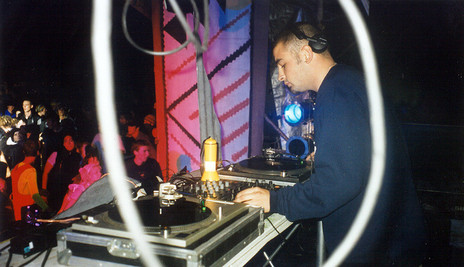

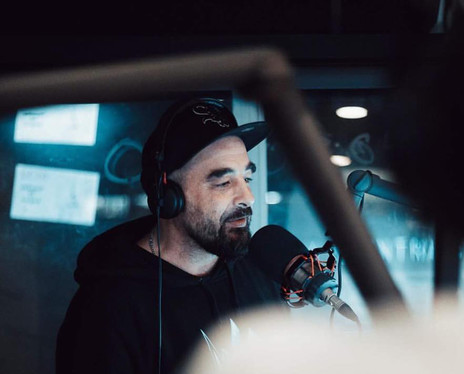

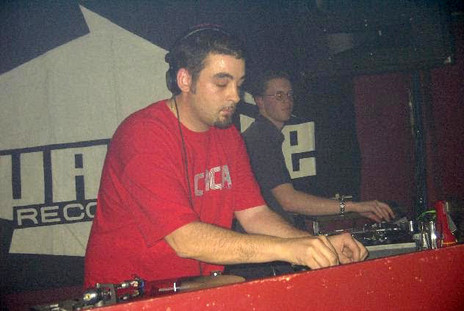

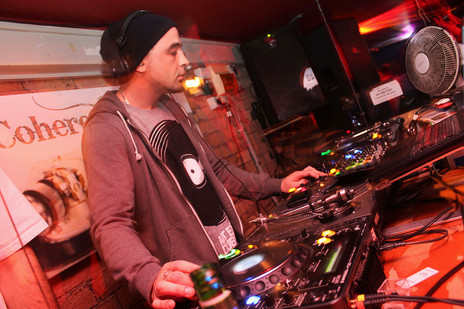
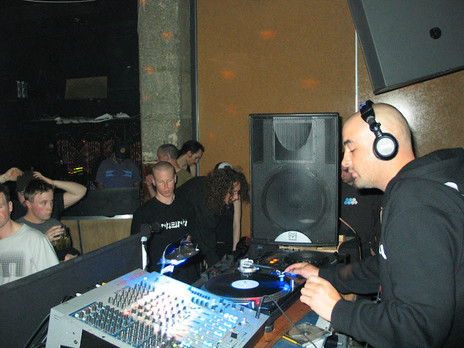
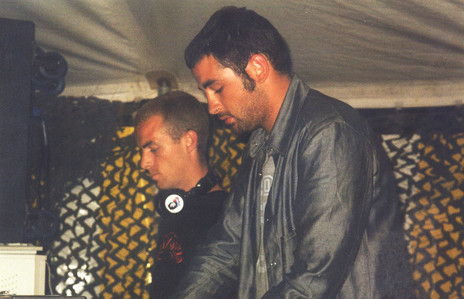
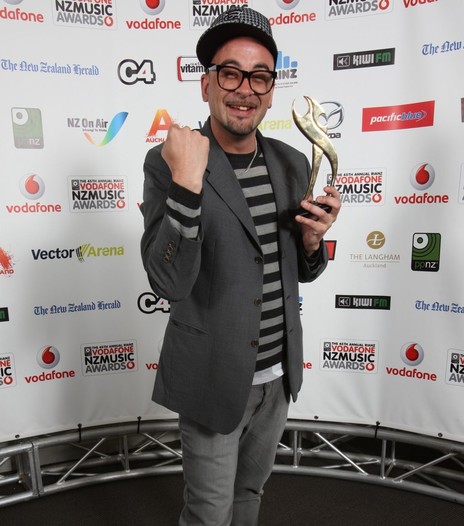
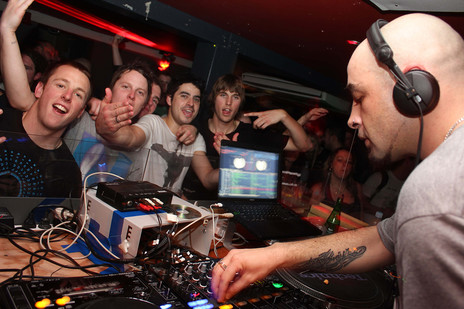
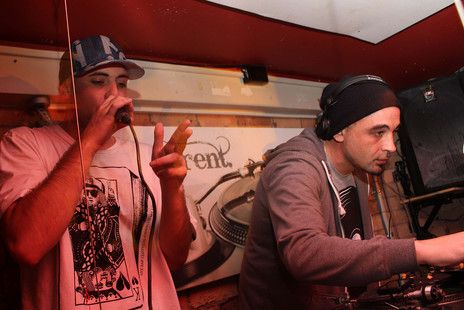
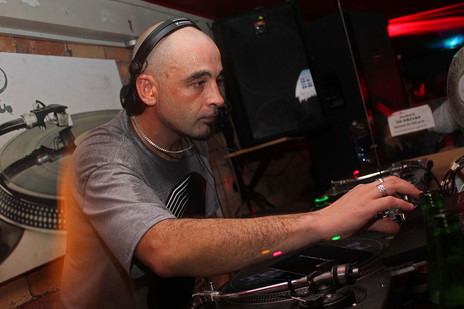
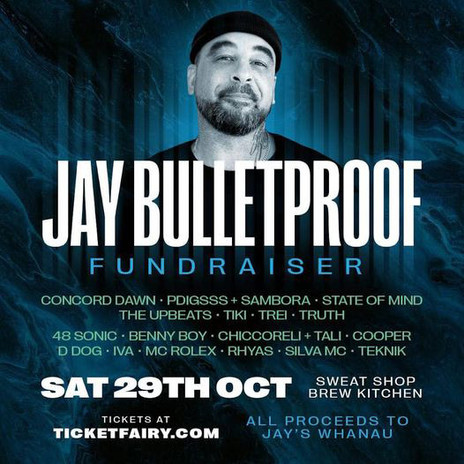
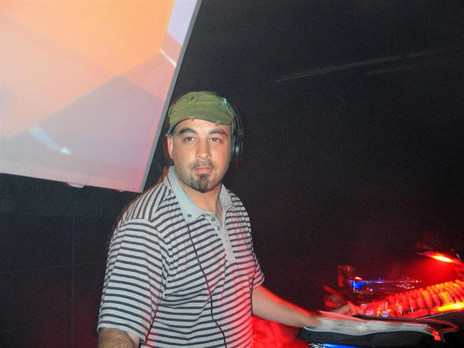
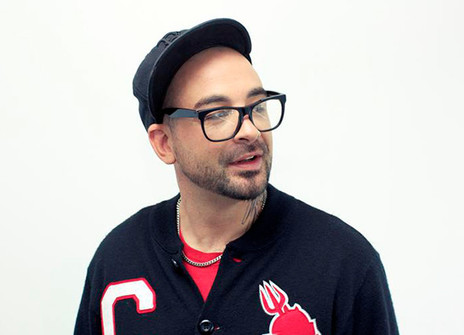
Cyanide Recordings
Bulletproof Music
Uprising Records
Function Records
Industry Recordings
Visit our sister site
NZ On ScreenMade with funding from
NZ On Air







